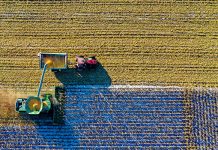Let me begin with a startling statement: there is no direct correlation between grazing capacity and grazing land values.
The only time that the value of veld or grazing directly correlates with carrying capacity is in budget calculations. This correlation is often made by agricultural economists treading on the professional valuer’s domain.
Although grazing capacity does influence grazing land values, there are other determining factors. These include alternative land uses such as grazing land purchased for conversion to a game farm, mining purposes or residential or commercial development.
Grazing land, just like cultivated dryland, irrigated land, permanently established pastures or permanent crop land, is not valuated according to production capacity, but according to the comparable sales method.
There are two key aspects to valuating grazing:
- Natural grazing and permanently established pastures are valued separately;
- Infrastructure such as fences, water reticulation, cattle-handling facilities and roads are Class B improvements, and are valuated as part of the grazing land, not separately.
Veld value factors
Terrain and topography: Both of these influence the ease with which grazing on a farm can be accessed by animals and management. Making and maintaining firebreaks on farms with steep mountains or baboon cliffs is difficult, and soils are usually shallow.
Camps and grazing systems: Over the years, a large variety of grazing systems has been developed, each suited to a specific situation. The ideal system should minimise the trampling of veld close to watering points and should be designed so that animals do not have to walk great distances to reach watering points.
Availability of quality water: Quality of water plays a major role both in irrigation and livestock farming.
Infrastructure (fences and water reticulation): Fences restricting animal movement and adequate piping will affect veld quality.
Toxic plants: Numerous plants are toxic to animals in varying degrees. If these are problematic on a farm, a lower-than-normal land value should be considered.
Veld condition: The grazing capacity of a farm influences its value, but the grazing capacity of different sections or camps is influenced by the condition of the specific veld. Although veld can show signs of overgrazing, it can recover with good management.
Grass species and veld types: A variety of veld types can be found on adjacent farms and even on one farm. Differences become significant when there are grazing plains, mountains, broken country, veld and marshland in the same area.
Veld types: the role of climate and soil
Veld type is a unit of vegetation where variation is small and the vegetation allows for the same farming potential.
Climate and soil play a major role in the development of different veld types. The two broadest veld types are sweet- and sourveld. Sweetveld is found in low-rainfall areas with mild winters and has good grazing in winter. Sourveld is found in high-rainfall areas with cold winters, and has the best grazing in spring.
Veld types of South Africa (1988) grouped 90 veld types with 75 variants into 11 veld-type groups:
- Coastal tropical forest;
- Inland tropical forest;
- Tropical bush and savanna;
- False bushveld;
- Karoo and karoid;
- False Karoo;
- Pure grassveld;
- False grassveld;
- Temperate and transitional forest and scrub;
- Sclerophyllous bush;
- False sclerophyllous bush.
Reference: Pienaar, P. (2013). Farm Valuations in Practice. South Africa: Author.













